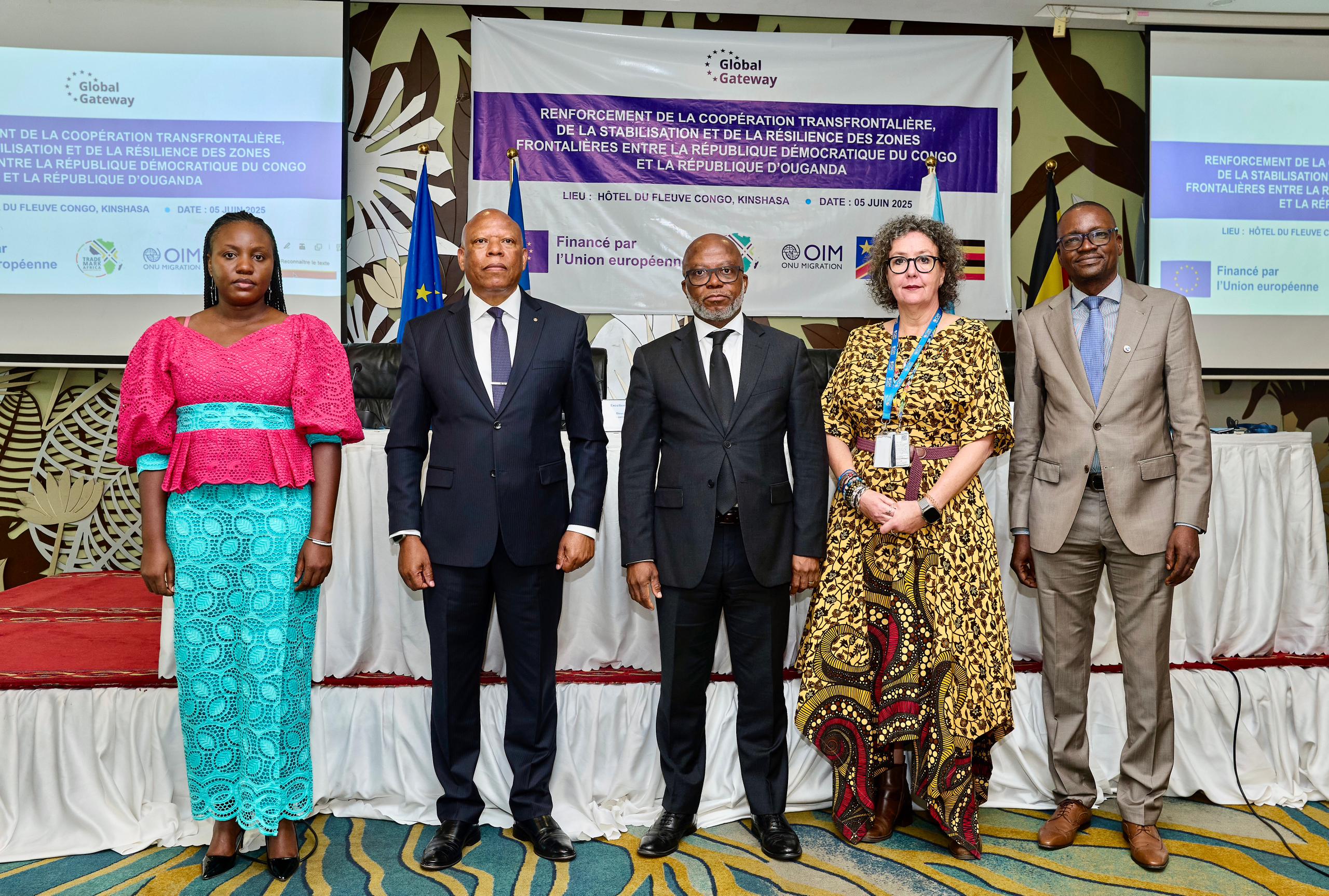Kinshasa, DRC – On June 5, 2025, the Democratic Republic of the Congo (DRC) and the Republic of Uganda, with crucial backing from the European Union (EU), officially launched two significant cross-border projects. These initiatives are designed to bolster stability, resilience, and cooperation, while simultaneously driving down logistical expenses and boosting trade in the border regions. The International Organization for Migration (IOM) and TradeMark Africa (TMA) are spearheading the implementation of these projects, which aim to foster safer, more efficient, and more resilient cross-border economies between the two nations. The launch event in Kinshasa was presided over by the Ministry of Foreign Affairs, International Cooperation, and Francophonie of the DRC, and saw the attendance of high-ranking officials from the Ugandan and Congolese governments, the European Union delegation, various sectoral ministries, and civil society representatives from both countries.
The first project, “Strengthening Cross-Border Cooperation, Stabilization, and Resilience of Border Areas,” is being implemented by IOM with a substantial funding of 15 million euros. Its core objectives include facilitating the safe movement of people and enhancing the management of migration flows, thereby reducing tensions among border communities. Furthermore, this project is committed to supporting community-based initiatives that actively promote peace, social cohesion, and the protection of vulnerable populations, with a particular emphasis on ensuring the inclusion of women and youth.
Running concurrently, the three-year “Peaceful and Resilient Borders II” program, spearheaded by TradeMark Africa with 10 million euros in funding, is set to improve transport infrastructure, streamline trade processes, and strengthen the resilience of communities residing along a vital yet delicate cross-border corridor. Key aspects of this initiative include the harmonization of customs procedures to align with East African Community (EAC) standards, the modernization of crucial infrastructure such as the Mahagi road and bridge, and the Ntoroko lake port, and the introduction of mobile laboratories for stringent quality control. A significant component of the program also focuses on youth training, equipping them with valuable professional skills for both employment and entrepreneurship opportunities.

Speaking at the event, Mr. Jean-Claude BWAKIEM, Director of Congolese Abroad, Ministry of Foreign Affairs, International Cooperation and Francophonie in DRC, stated: “These programmes demonstrate how strong partnerships can deliver lasting change. We are building the foundation for long-term stability, where the benefits of peace are reflected in better governance, stronger trade, and improved livelihoods.”
For his part, Major General Apollo KASIITA-GOWA, Chief, Citizenship and Immigration Control in Uganda, emphasised: “Uganda remains committed to building safe, secure, and integrated border regions. These projects support our regional integration agenda and respond to the daily realities of our border communities.”
Mr. Alain KIKENI KIMOLO, Project Manager – Health and Human Development at the EU Delegation remarked: “Our investment is about reinforcing trust – trust in public institutions, in cross-border systems, and in the people who rely on them. This is about creating the conditions for lasting peace and meaningful trade integration in a region central to Africa’s development. By improving the movement of people and goods, we are opening real opportunities for economic and social progress.”
“Mobility must be safe, regulated, and inclusive. Our approach goes beyond building systems – we aim to empower communities to co-create solutions that reduce vulnerability and uphold dignity. This launch symbolises a coordinated, strategic, and united response to the expectations of populations living in border areas rich in human and economic potential,” stated Ms. Alexandra SIMPSON, Chief of Mission of IOM in the DRC.
Ms. Gladys KALOMBOLA, Programme Manager at TradeMark Africa, stated: “Trade must do more than move goods; it must move people towards opportunity. The DRC–Uganda border, like many across the continent, holds untapped potential. By addressing the bottlenecks that hinder it, we are unlocking a more equitable future, one where trade becomes a pathway to shared prosperity and peace.”
Over the course of three years, these complementary initiatives aim to transform the border areas between the DRC and Uganda into spaces not only of security and stability but also of inclusive socio-economic development, conducive for formal trade and active participation of local communities. The DRC–Uganda corridor, home to over 15 million people, is one of the busiest trade routes in the Great Lakes region. These projects aim to address these long-standing barriers, unlock new opportunities for inclusive growth, and contribute to the security and social cohesion in these areas. The second launch ceremony, planned in Bunia (Ituri Province), will further strengthen the involvement of provincial authorities and community actors in the implementation of the projects on the ground.















